Market Signals Summary:
All our indicators, that is the MAC-US, the S&P 500 Coppock Indicator, the 3-mo Hi-Lo Index of the S&P 500, the CAPE-Cycle-ID, and the iM-Google Trend Time are invested in the stock market. The BCIg does not signal a recession however the growth of the Conference Board’s Leading Economic Indicator continues to signal recession warning; the Forward Rate Ratio between the 2 and 10 year rates inverted beginning August 2022; November 2022. The iM-Gold Coppock and the iM-Silver Coppock are invested in the respective metals, as is the iM-Gold Timer.
Stock-markets:
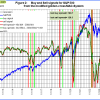 The MAC-US model invested the US stock markets in first week of February 2023.
The MAC-US model invested the US stock markets in first week of February 2023.
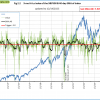 The 3-mo Hi-Lo Index Index of the S&P500 is at 7.50% (last week 2.51%) is invested in the markets the markets since mid December 2023..
The 3-mo Hi-Lo Index Index of the S&P500 is at 7.50% (last week 2.51%) is invested in the markets the markets since mid December 2023..
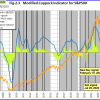 The Coppock indicator for the S&P500 entered the the US stock markets in the first week February 2023. This indicator is described here.
The Coppock indicator for the S&P500 entered the the US stock markets in the first week February 2023. This indicator is described here.
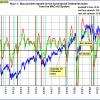 The MAC-AU model generated a buy signal end November 2023, and is invested from the Australian stock market.
The MAC-AU model generated a buy signal end November 2023, and is invested from the Australian stock market.
This model and its application is described in MAC-Australia: A Moving Average Crossover System for Superannuation Asset Allocations.
Recession:
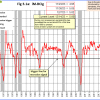 BCIg is not signaling a recession.
BCIg is not signaling a recession.
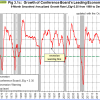 The growth of the Conference Board’s Leading Economic Indicator since the August 18, 2022 update is signals a recession. The November 20, 2023 update of the Leading Economic Indicator (LEI) continues to signal that the US economy is/will soon be in a recession.
The growth of the Conference Board’s Leading Economic Indicator since the August 18, 2022 update is signals a recession. The November 20, 2023 update of the Leading Economic Indicator (LEI) continues to signal that the US economy is/will soon be in a recession.
 The Forward Rate Ratio between the 2-year and 10-year U.S. Treasury yields (FRR2-10) inverted beginning August 2022 and is signalling a recession — the average lead time of this signal is 14 months.
The Forward Rate Ratio between the 2-year and 10-year U.S. Treasury yields (FRR2-10) inverted beginning August 2022 and is signalling a recession — the average lead time of this signal is 14 months.
A description of this indicator can be found here.
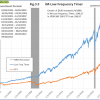 The iM-Low Frequency Timer switched to bonds on 9/26/2022.
The iM-Low Frequency Timer switched to bonds on 9/26/2022.
A description of this indicator can be found here.
